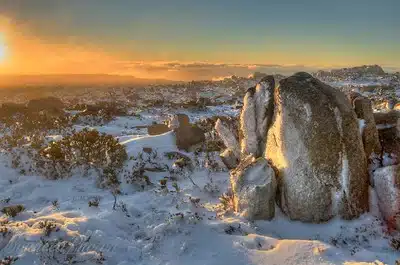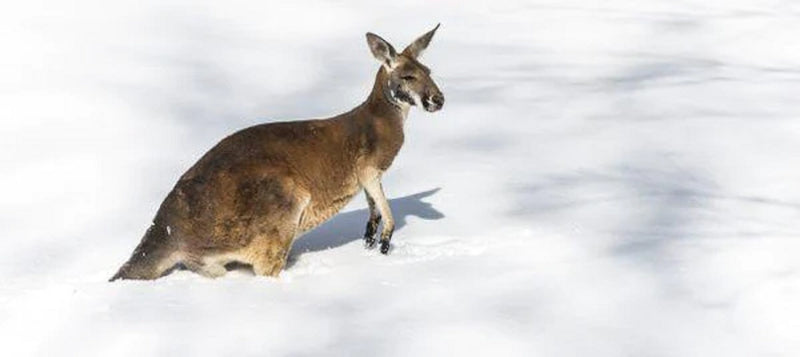Visit the Most Popular Winter Destinations for Snow In Australia This Year
Visit the Most Popular Winter Destinations for Snow In Australia This Year
Blog Article
Discover the Fascinating Results of Snow in Australia on Neighborhood Environments
Regardless of its online reputation for sun-soaked landscapes, Australia additionally boasts regions buried by snow-- a phenomenon that exceptionally influences the nation's one-of-a-kind communities. The shielding homes of snowflakes secure flora and animals among the coldest winters months, while the melting snow nurtures rivers and water life. Nevertheless, the actual marvel lies in exactly how these frosty conditions form the nation's biodiversity and nutrient cycles. As we decipher this intricate connection, we locate ourselves walking on uncharted grounds in Australia's high country.
The Unanticipated Regions of Snowfall in Australia
Although Australia is commonly associated with sandy beaches and sun-scorched landscapes, particular regions remarkably experience snowfall. The high country regions of New South Wales, Victoria, and Tasmania are especially understood for their winter months snow. The Snowy Hills in NSW, for example, get plentiful seasonal snow, using a stark comparison to the nation's regular warm, arid environment. The Victorian Alps and parts of Tasmania likewise see yearly snowfalls, changing the landscape into a winter season heaven. These locations are not just anomalies however important components of Australia's varied environment system. The visibility of snow in these areas significantly affects neighborhood ecological communities, consequently impacting the country's one-of-a-kind biodiversity. The specific effect on Australia's distinct plants will be gone over in the next section.

How Snow Impacts Australia's One-of-a-kind Plants
These plants have actually advanced to survive in extreme conditions, with snow serving as a safety blanket from freezing temperature levels and extreme winds. The snow also adds to the dampness web content of the soil, offering essential hydration for plant life during the completely dry summertime months. In essence, the snow influences the timing of blooming and seed dispersal, the growth rates, and the survival of several plant varieties, showcasing the intricate interaction in between climate and plants in Australia.

The Adjustments of Australian Animal to Snowfall
Simply as Australia's plants has actually adapted to the wintery problems, the local animals see this here too, exhibit exceptional adaptations to the snowfall. It uses the snow as insulation, hibernating in rock gaps under the snow to stay cozy. The Snow Skink, a varieties of reptile, transforms its colour to white during winter, providing camouflage against killers.
The Role of Snow fit Regional Ecological Communities
Fit the neighborhood communities, the function of snow in Australia is both multilayered and extensive. It influences the circulation of vegetation and fauna, mainly specifying the biodiversity of sub-alpine and towering regions. Snow supplies a vital water resource, feeding rivers and storage this website tanks as it melts, therefore sustaining a selection of aquatic life forms. Furthermore, snow acts as an insulator, shielding ground-dwelling microorganisms from severe cold. In a similar way, it plays a substantial duty in dirt development and nutrient cycling. The periodic freezing and thawing of soil induced by snowfall promotes the failure of rocks, boosting dirt fertility. As a result, the visibility of snow shapes the plant life patterns, pet actions, and overall sustainability of Australia's special ecosystems. Does It Snow In Australia.

The Future of Snowfall in Australia: Forecasts and Effects

Provided the vital function snow plays in shaping local communities, the future of snowfall in Australia is drawing enhancing focus from scientists and ecologists. Current environment versions predict a significant decrease in snowfall because of international warming, with possibly extensive influence on local ecological communities. Much less snow could result in reduced water availability in alpine regions, detrimentally influencing wild animals environments and plant. In addition, it can alter the timing of seasonal changes, disrupting the life cycles of lots of native types. The tourism sector, heavily reliant on the winter season snow my latest blog post season, might likewise deal with considerable challenges. Understanding these predictions and their implications is crucial to create effective conservation approaches, making sure the conservation of Australia's unique biodiversity and the sustainability of its economic situation.
Verdict
The function of snow in Australia's ecological communities is crucial yet frequently forgotten. Thus, the snow in Australia is more than an all-natural spectacle; it's a crucial player in the nation's environmental story.
Regardless of its track record for sun-soaked landscapes, Australia also boasts regions buried by snow-- a phenomenon that greatly affects the nation's distinct environments. It makes use of the snow as insulation, hibernating in rock holes under the snow to remain warm - Snow In Australia.In forming the neighborhood ecosystems, the function of snow in Australia is both profound and multilayered. The existence of snow shapes the plants patterns, pet behavior, and total sustainability of Australia's special ecological communities
Offered the essential role snow plays in shaping local communities, the future of snowfall in Australia is attracting boosting focus from conservationists and scientists.
Report this page